Bouldering in Glendalough, Co. Wicklow
 |
| Glendalough |
"In any online discussion about grades, and there have been many of these over the years, you can almost set your watch by the arrival of some pundit who will roll out the aged old cliche that there are only two grades that matter: those you can do, and (wait for it) those you can't! The corollary being that grades are unimportant. [...] Grades and grading arguments are in our blood, and people who say they don't care about them are simply not being honest."
- Superstars of the BMX 7a+
- The Fin SS 7a+
- The Egg SS 7a+
- 2.4 Pascal SS 7a+
- Andy's Arete SS 7a
- BBE (standing start) 7a
- Road house and mingeback 7a
- The Nu Rails SS 6c
- Chillax SS 6c
- Barry's Problem SS 6c
- John's roof SS 6c
- San Miguel SS 6c
- Greg's Problem traverse 6c
- Chuppa Chups 6b
- Quality Control SS 6b
- Superswinger SS 6b
- The Plum 6b
- climbing level: if you send a new 7a every day for breakfast, there is no way you can make a difference between a 5 and a 6a. For instance John Gaskins climbed "Away from the numbers" a few years ago, a problem that was probably a piece of cake for him. At that time he roughly estimated the grade to be 7a+. I do suspect it is harder and I don't think that climb has received many ascents since then.
- climbing style and diversity: having a 6a level should mean that you can climb any 6a. However it is never the case as we hardly have access to a diversity of rock, heights, angle, holds and landings. Most climbers rely on their local crag for obvious financial/time reasons and therefore they usually get spanked big time when they go and visit different climbing locations. This has a big impact on grading because it means we tend to specialise within the grade level, i.e. we find easy those Glendo hard moves we are used too, but we find the Font warm-ups very hard, leading us to think that their grades are messed up.
- Amount of tries/ascents: when getting a problem after a hundred tries you cannot properly grade it, because you feel that you have achieved something far beyond your usual climbing. Conversely a problem that you have done many times feels much easier because your body knows the job perfectly: Has anyone ever seen Barry O'Dwyer in Glendo? The guy stopped climbing for a year but I bet you he still warms up on the Egg.
- Conditions: That's a big one. Grades are floating with the wind, the temperature and the humidity. It might sound obvious but everything feels easier when conditions are perfect.
- Climber's morphology: Another obvious one. I am over 6 ft (longer reach but bigger leverage), my ape index is negative (good for foot locks, bad for mantel), I have big feet (good for smearing, bad for edging), and long spatulate fingers (perfect on slopers but painful on pockets). So for me the Fin should be easier than the egg. It is probably not the case for a short monkey with tiny feet and stumpy fingers. By the way my wife says I also have big soft lips but she does not want to share them.
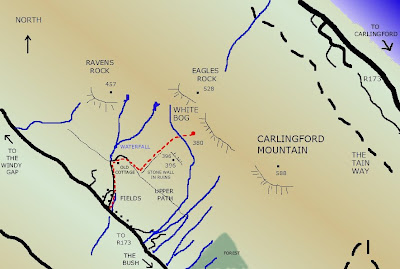

 We also have cleaned and climbed a few lines around. The first boulder we tried was the low overhanging
We also have cleaned and climbed a few lines around. The first boulder we tried was the low overhanging 









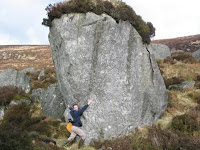
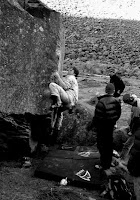
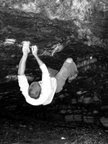


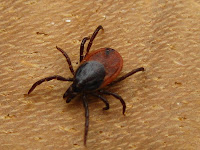
 Park at the same carpark than Lough Bray, two kilometres south of Glencree on the military road beside the small quarry. Go up to the top of the small quarry and walk through the bog toward the Sugarloaf. Lough Bray should be in your back and Glencree on your left. After 20mn you will reach the Stonecutters Glen. The first main boulders you should come across are the egg and the split boulder.
Park at the same carpark than Lough Bray, two kilometres south of Glencree on the military road beside the small quarry. Go up to the top of the small quarry and walk through the bog toward the Sugarloaf. Lough Bray should be in your back and Glencree on your left. After 20mn you will reach the Stonecutters Glen. The first main boulders you should come across are the egg and the split boulder.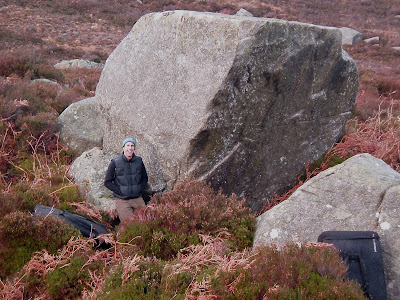 Brutal overhanging arête. Definitly the hardest line in the Stonecutters Glen. Rif Raf is the hard deadpoint from a crimpy rail on the right hand side.
Brutal overhanging arête. Definitly the hardest line in the Stonecutters Glen. Rif Raf is the hard deadpoint from a crimpy rail on the right hand side.